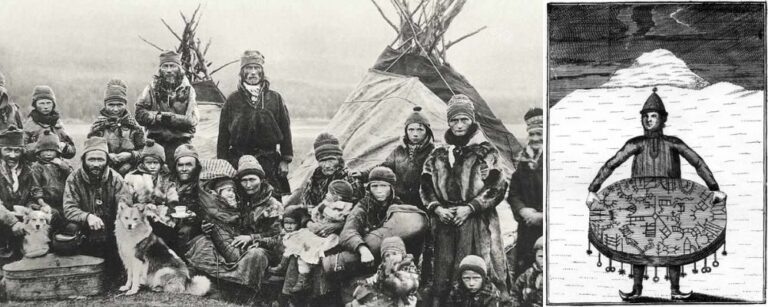While many Europeans called the Vikings the Northmen, the Vikings had their own northern neighbors.
While the Vikings, or Norse men of Germanic descent and culture, occupied the southern regions of Norway and Sweden, plus Denmark, the north was occupied by the Sami.
Who Are the Sami?
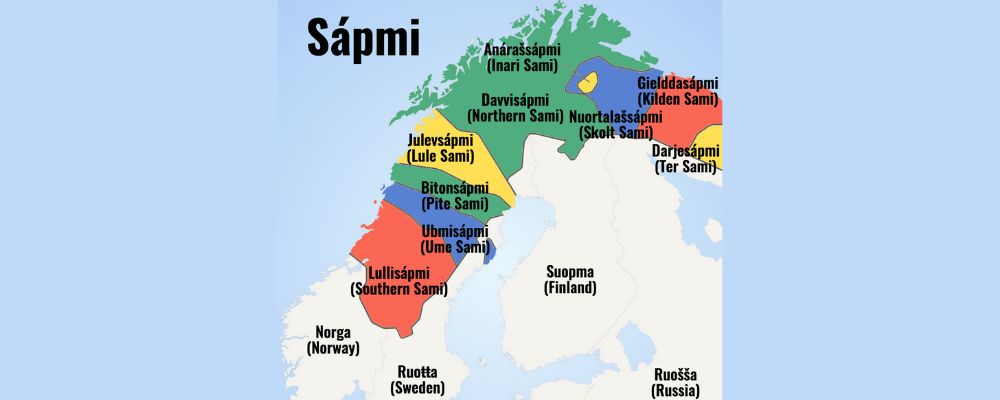
The Sámi are indigenous people who have traditionally occupied the northern parts of Norway, Sweden, Finland, and the Kola Peninsula in Russia, all of which were often collectively called Lapland.
They are from the Uralic language family, which means that they are more closely related to Hungarians and Estonians than their Viking neighbors.
There is some evidence that people related to the Sami were in the area from as early as 10,000 years ago as petroglyphs that seem to be related to their culture survive from that period.
Firm archaeological evidence for their presence dates back to the Bronze Age, around 1600/1500 BCE.
They migrated into the area separate from the people who would become the Vikings, who arrived sometime later.
They were observed in the pre-Viking Age. The Roman historian Tacitus, writing around 98 CE described “Fenni” people who lived a nomadic existence in the northern climes of what he considered Germania.
In the second century CE, Ptolemy of Alexandria made similar observations about a people he called the “Phinnoi”.
In 555 CE the Greek author Procopius referred to “Skridfinnns”, and in 750 CA, Paulus Diaconus observed “Skridfinns” that kept deer.
Sami Culture
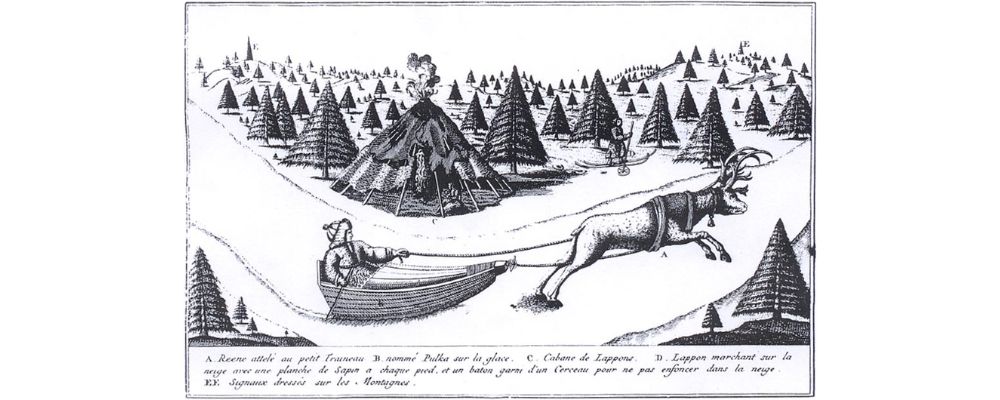
The Sami were semi-nomadic hunters that lived in the coldest Arctic regions.
They were fishermen and hunters known to be lightning-fast skiers and excellent shots with a bow and arrow.
There is some suggestion that the Norse giantess-goddess Skadi was associated with the Sami as she was known as an excellent skier and hunter.
They lived in tents made from animal hides that they would move around their territory throughout the year.
They also often traveled by boat, with fjords and shallow coasts much easier to navigate than the dense forests.
They were also known for reindeer rearing, husbands, and hunting. One of the hallmark archaeological signs of Sami presence is Sieidi Stones.
These are stones between 60 cm and 1.4 m in height that looked humanish, kind of like stone scarecrows.
They were often located in mountainous regions near pitfalls and manmade traps.
It is believed that they were used in wild reindeer hints and that the animals were herded into areas where they were either killed by the fall or enclosed so that they could be picked off by hunters.
Many reindeer bones are found in the vicinity of these traps.
Near the traps are also found shooting shelters, made from stones and hides, where Sami hunters probably hid until it was time to strike at their prey.
Other distinctively Sami archaeological traces include slab-lined pits, graves with bodies covered in birch bark shrouds, and bear burials, that saw the animals slaughtered and their remains ritually organized.
A later Sami poem suggests that eating certain parts of a bear was thought to grant the strength of the animal, not unlike the Viking tradition of Berserker warriors.
Living Alongside the Vikings
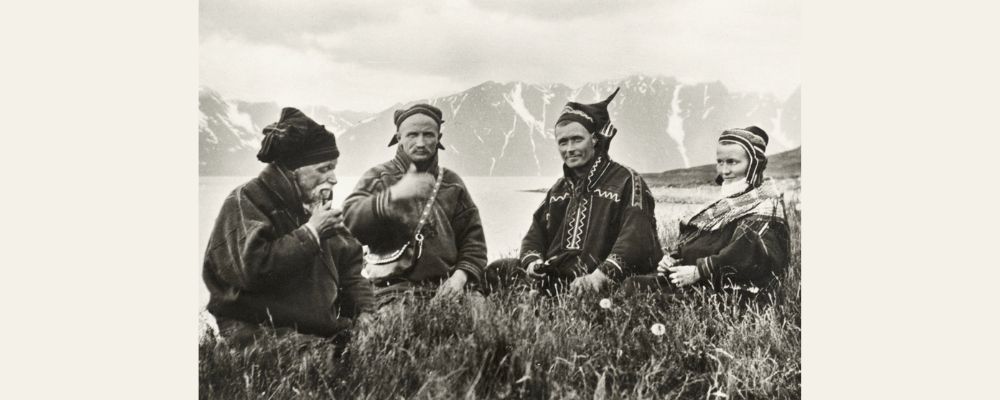
The Vikings and the Sami lived in distinct areas, but there was some overlap between them, especially in Norway.
The Vikings tended to occupy the coastal regions, and the Sami in the inland regions, but there is good evidence for plenty of cultural contact, plus intermarriage through the examination of DNA from both Norwegian Viking and Sami graves.
It seems that the Vikings and the Sami exchanged goods both as a form of trade, and perhaps as a form of alliance, with the Sami giving the Vikings valuables in return for protection.
According to the Anglo-Saxon Chronicle, a Viking chief from the north of Norway called Ohthere of Halogaland traveled to England and met with King Alfred the Great.
Here he explained that he received gafole, which could be interpreted as gifts or tribute, from the Sami.
This took the form of furs and skins from both land and sea animals. He said that trading these goods were among his most important sources of income.
Furs and skins seem to have been of principal interest to the Vikings, and the Norse word for fox is actually adapted from the Sami word.
The Sami seem to have been interested in metal, and things such as Viking arm rings are sometimes found among Sami archaeological remains.
There is also an example of a 10th-century Norwegian man buried in typical Viking style in a ship.
But the ship has been sewn together using reindeer sinews, suggesting that it was of Sami make.
Sami Magic

A consistent theme in the few surviving Norse accounts of the Sami is a belief that they were powerful magicians and magic workers and could teach magic.
According to Snorri Sturluson, Gunnhildr, an evil witch, learned magic with two Sami sorcerers.
A Latin text from the 12th century known as The History of Norway described a Sami shamanic ritual in which the magician, called a noaidi, held onto a vessel that was decorated with images of whales, reindeer, and boats.
He did a magical dance that enabled his gandus spirit to travel using these representations.
But while on the move, his gandus encountered another and did battle.
His gandus died, and the soccer dropped dead from the same injuries that his gandus had received.
We now know that the vessel that the sorcerer held was probably a drum, which are still decorated in this fashion.
They are used in various ways in Sami magic.
For example, objects representing different things can be placed on top of the drum, and then the drum is hit, and where the pieces land is used as a form of divination.
The End of the Viking Era
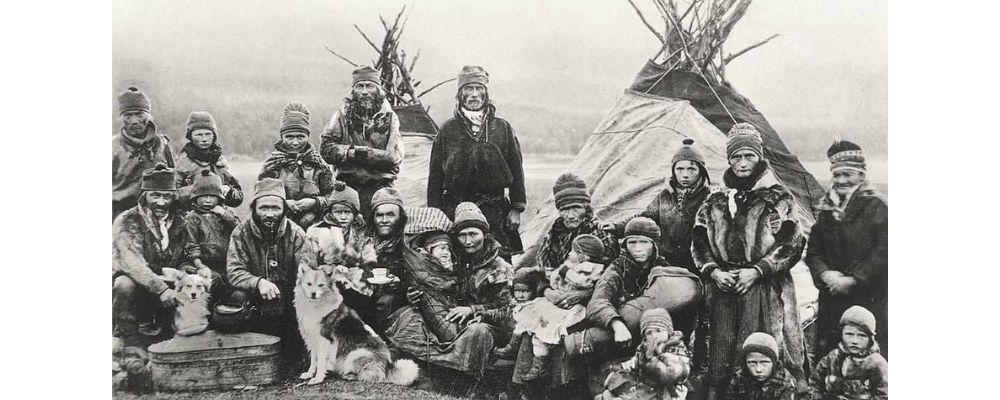
Interestingly, when the Vikings started to convert to Christianity, they never seem to have tried to convert their Sami neighbors, just like they never seem to have really tried to bring the Sami under their power.
While there were arrangements between individual Sami groups and Viking chiefs, there is no evidence that the Vikings ever tried to turn them into “subjects”.
It is unclear why. Part of the reason could be that the Vikings did not value Sami territory as too wild, in fact, they often referred to it as uninhabited, despite the Sami living there.
Perhaps it was preferable to leave the Sami be and trade for these goods, rather than take on the wilderness alone.
While there were efforts to convert the Sami from around the 16th century, serious contact between the Sami and the people in the south only began around the 18th century when the governments of Norway and Sweden began to assert sovereignty in the north. Forced assimilation policies were common in the 19th century.
Today, like many indigenous people around the world, the Sami are trying to recover from this period of cultural loss, while also battling the impact of climate change.
